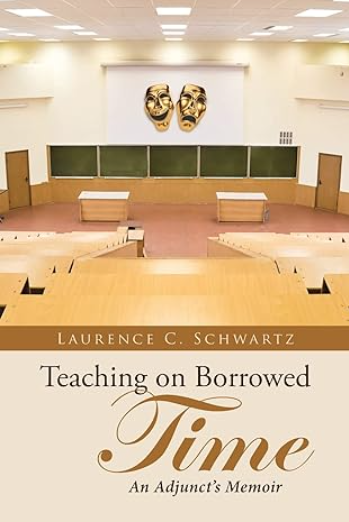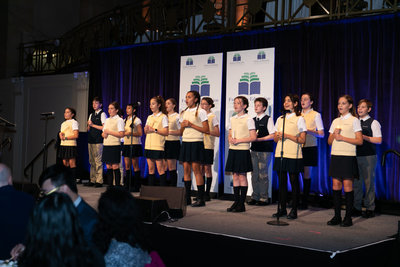‘Teaching On Borrowed Time’: The Voice of an Adjunct Professor
By Laurence C. Schwartz | news@queensledger.com

Editor’s Note: In our sister paper, the Queens Ledger, reporters Charlie Finnerty and Celia Bernhardt have been covering the last-minute layoffs of more than 20 faculty at Queens College-CUNY. This week, we are profiling a book related to adjunct injustice, including intense schedules and financial challenges, as well as some of the rewards of the job, with mention of Brooklyn.
The following is an excerpt from the book Teaching on Borrowed Time: An Adjunct’s Memoir by Laurence C. Schwartz of New York City, reprinted with permission here. The book guides the reader through his thirty-plus years of teaching part-time as an adjunct lecturer on the university circuit. Always unpredictable and never dull, Schwartz’s journey will take him to twenty different colleges and to twenty-three different subjects. Given that 65 percent of the nation’s undergraduate faculty consists of adjuncts, who have uncertain job security, Teaching on Borrowed Time gives voice to the adjunct community as well as those who stubbornly forge ahead in their professional quests for the sheer joy of the work.
You will find two passages about the author’s time teaching at Kingsborough Community College, part of the CUNY system:
Sometime after the first of the year, I was speaking with a Dr. Mortimer Becker in his office in the Western Cluster of Kingsborough Community College of the City University of New York. The Aspen Institute College Excellency Program ranked KCC among the top four community colleges in the nation. Dr. Becker chaired the Department of Communication and Performing Arts. From what little time I spent in his office, I concluded that I was in the presence of a true gentleman. When I attended Dr. Becker’s ceremonial dinner some months after my interview, one of the department’s secretaries referred to his “quiet dignity.”
One day, about halfway into the spring semester, I went to the Department of Communications and Performing Arts to check my mail. Dr. Becker emerged from his office. When he hired me, it was his last semester before retiring. During my first semester at KCC, Dr. Becker still used his office, but he already named a Dr. Cliff Hesse as the new chairman. After Dr. Becker emerged from his office, he smiled at me and, with the wave of his hand, gave me a lyrically dismissive gesture. On hindsight, I interpret this gesture to mean that I was way too young and clueless to really understand mortality. I think that when he made the gesture, he knew he didn’t have a long time left in this world. Dr. Becker died a few months later.
I was referred to Dr. Becker by Dr. Spector at LIU. I believe that during our interview, Dr. Becker was evaluating and assessing me, trying to sense if I had the strengths needed to teach a public speaking course at a reputable community college. At LIU, Dr. Pasternak just wanted to meet and make sure I was a well-spoken young man. I very much liked Dr. Becker. He made me feel welcomed. Mind you, I still tasted ash in my mouth from waiting tables and working in tense environments. Perhaps you can understand why I was so impressed by Dr. Becker’s gentleness and “quiet dignity.” When one works for curt and cold managers, one can tend to overappreciate plain humanity.
When I sensed the conclusion of my interview with Dr. Becker, I asked him, “So can I teach a course for you?”
“I’ll give you two. Come with me.”
He stood, came around from behind his desk, and made a gesture befitting a nobleman that parlayed that I was to lead the way. He certainly had a way of gesturing, Dr. Becker did. When he followed me out of his office, he placed his hand on my shoulder and said to his secretary, “Larry will be joining our adjunct faculty.” Then he turned to me. “Like to fill out the paperwork now?”
“Of course.”
Then Dr. Becker nodded to his secretary, cuing her to begin the process.
This was style!
“Welcome to Kingsborough,” his secretary said. And she meant it. She was a sweet elderly woman. There was another elderly secretary in the office who was just as sweet. I have since come to learn that among faculty and administration in academia, sweetness can be a welcomed surprise; eccentricity, a find for the ages. A cool and distant politeness is the norm.
I’ve always regretted not having the opportunity to get to know Dr. Becker. I suppose I could have learned a good deal from him about a great many things. He was the kind of man who, if you poked your head in his door and asked to see him about something, he would stop whatever he was doing and give you his time. Dr. Becker’s replacement, Dr. Cliff Hesse, was no different. A good man was chosen by a good man.
•••
Another small victory at KCC was introducing a couple of students to two of the books that I loved. One of the students was a jittery yet lithe Hispanic with a pencil-thin mustache. There was a restlessness in him that I recognized on the very first day of class. To this young man, I introduced Time of the Assassins by Henry Miller. This is Henry Miller’s tribute to French poet Arthur Rimbaud. You can appreciate it on more than one level, not the least of which is ecstatic appreciation one writer has for another. Another level is Miller’s dissection of the poet’s role in society. Another is Miller’s facile psychological analysis of Rimbaud. And, too, there is the sheer buoyancy of Miller’s prose. There are enough goodies on the plate to choose from.
When I handed the young man the book, he immediately turned to the first page and began reading.
“Thank you,” he said, “but why me?”
“Why not you?” I rejoined.
Another student to whom I introduced one of my more exciting and informative reads was a rotund young man with a jolly disposition. If he’d been dressed in red velvet and had a white beard on him and a red stocking cap on his head, he could have easily played Santa Claus’s young understudy. Why would I give a copy of Jean Paul Sartre’s Anti-Semite and Jew to such a young man? Like Time of the Assassins, you can appreciate Anti-Semite and Jew on more than one level, not the least of which is its probing examination of the bigoted and racist mind. In the spring of ’92, news of the Brooklyn killing of Yusef Hawkins and the Crown Heights riot were still fresh. Racism in America would always be a fresh topic of discussion, even if dishonestly approached. I was sure this young man could take something away from Sartre’s work. Anti-Semite and Jew was terrifically accessible.
Both young men thanked me when they returned the books, and both told me they enjoyed it—small but sweet victories.
Laurence C. Schwartz is a New York based theatre director and educator. He recently directed for the New York Theatre Festival. Last spring he directed Sam Shepard’s “True West” for the NYPL’s Special Event Series. He is currently directing for The Secret Theatre’s Short Play Festival. Laurence is an Adjunct Lecturer at Mercy University in Manhattan where he teaches Communications Arts and Cinema Studies.
Teaching on Borrowed Time can be found on Amazon, Barnes & Noble, LibroWorld.com, Magers & Quinn Booksellers, and eBay.



